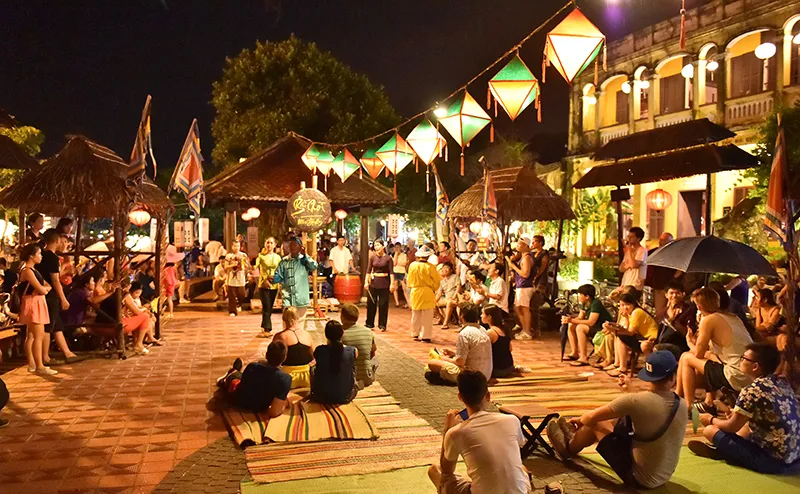Bài Chòi is a unique form of folk art from Central Vietnam that combines music, poetry, and theatrical elements. Originating from rural communities in Central Vietnam, particularly in Quang Nam, Quang Ngai, Binh Dinh, and Phu Yen, Bài Chòi is not only a type of performance art but also a folk game typically held during early spring festivals to foster community connections.
1. Origin and Historical Development
Bài Chòi originated from small huts set up in the fields, where villagers would gather to play cards and sing together, giving rise to the name “Bài Chòi” (with “chòi” meaning a small temporary hut).
Initially, Bài Chòi was a simple folk game, but over time, it evolved into a staged performance art with numerous tunes and unique singing styles. In 2017, UNESCO recognized Bài Chòi as an Intangible Cultural Heritage of Humanity, furthering the preservation and promotion of Central Vietnam’s traditional culture.
2. Gameplay and Structure of Bài Chòi
The Bài Chòi Game: Participants sit in small huts arranged in two rows facing each other. A central figure, called the “Hiệu” (the Bài Chòi caller), draws a card and sings a poetic line or chant that hints at the name of the card. Players listen and try to guess if they hold that card. If they do, they call out and are rewarded. Although based on chance, the game is full of charm thanks to the wit and humor in the chants and dialogues.
Performance Art: Bài Chòi includes songs and chants that convey moral lessons, celebrate labor, and depict the beauty of the homeland and family bonds.
3. Artistic Elements of Bài Chòi
Music: The melodies of Bài Chòi are typically lively and reflect the folk style of Central Vietnam. Traditional instruments used include the đàn nhị (Vietnamese fiddle), đàn nguyệt (moon lute), drums, castanets, and handclaps.
Lyrics: Bài Chòi lyrics are simple yet meaningful, closely tied to rural life. They often contain witty, folk-like lines that also hold profound insights into life.
Performance: The “Hiệu” plays a crucial role, not only singing but also improvising, storytelling, and interacting with the audience, creating a lively and engaging experience.
4. Cultural Significance and Preservation of Bài Chòi
Bài Chòi serves as a bridge between generations, helping younger people better understand their culture and heritage. Many Central Vietnamese regions are currently striving to restore, preserve, and promote Bài Chòi through competitions, spring festivals, and classes for younger generations.

